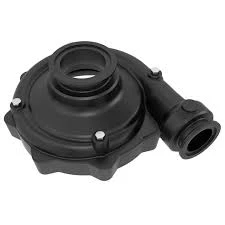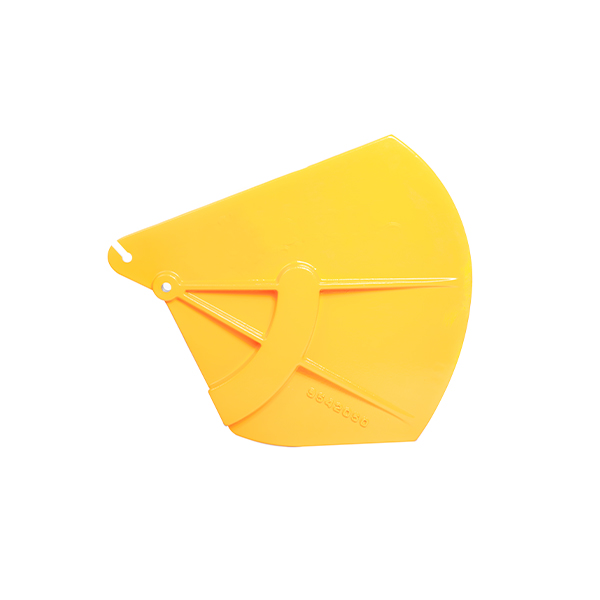Mobile:+86-311-808-126-83
Email:info@ydcastings.com
Die Casting Explained Precision Metal Parts & How It Works
- Understanding Die Casting: Definition and Core Principles
- Mechanics of Die Casting: Process and Equipment
- Sand Casting Explained: A Comparative Overview
- Technical Advantages: Efficiency, Precision, and Material Flexibility
- Manufacturer Comparison: Key Metrics and Performance Data
- Custom Solutions: Tailoring Die Casting for Industry-Specific Needs
- Real-World Applications: Case Studies Across Industries

(what does die casting mean)
Understanding Die Casting: Definition and Core Principles
Die casting is a high-precision manufacturing process where molten metal is injected into reusable steel molds (dies) under extreme pressure. This method is widely used to produce complex, dimensionally stable parts with smooth surfaces. The global die casting market, valued at $72.8 billion in 2023, is projected to grow at a CAGR of 5.3% through 2030, driven by demand in automotive and aerospace sectors.
Mechanics of Die Casting: Process and Equipment
The die casting cycle involves four stages: clamping, injection, cooling, and ejection. Advanced machines apply pressures ranging from 1,500 to 25,000 psi, ensuring rapid filling of intricate cavities. Modern systems integrate real-time sensors to monitor temperature (±2°C accuracy) and pressure, reducing defect rates to <0.3%.
Sand Casting Explained: A Comparative Overview
Unlike die casting, sand casting utilizes expendable sand molds, making it suitable for low-volume production. While sand casting accommodates larger parts (up to 500 kg), its surface finish (Ra 12.5–25 μm) is rougher than die casting’s Ra 0.8–3.2 μm. Lead times are typically 30–50% longer due to mold preparation requirements.
Technical Advantages: Efficiency, Precision, and Material Flexibility
Die casting outperforms sand casting in three critical areas:
- Speed: Cycle times as short as 15 seconds for small components
- Tolerances: ±0.05 mm precision vs. ±1.5 mm in sand casting
- Material Range: Zinc, aluminum, and magnesium alloys with 92–98% recyclability
Manufacturer Comparison: Key Metrics and Performance Data
| Vendor | Process | Max Clamp Force (tons) | Dimensional Accuracy | Cost per Unit ($) |
|---|---|---|---|---|
| Vendor A | Cold Chamber | 3,200 | ±0.08 mm | 4.20 |
| Vendor B | Hot Chamber | 1,800 | ±0.12 mm | 3.75 |
| Vendor C | Hybrid | 4,500 | ±0.05 mm | 5.10 |
Custom Solutions: Tailoring Die Casting for Industry-Specific Needs
Leading manufacturers now offer modular die designs with 72-hour turnaround for prototype tooling. Custom alloys (e.g., AlSi10Mg with 15% silicon) enable tensile strengths up to 310 MPa, while conformal cooling channels in dies improve cycle efficiency by 18–22%.
Real-World Applications: Case Studies Across Industries
A recent automotive project achieved 23% weight reduction using magnesium die-cast components, saving $14.50 per vehicle in fuel costs. In consumer electronics, aluminum die casting enabled heat sinks with 40% better thermal conductivity than CNC-machined alternatives, at 60% lower production costs.

(what does die casting mean)
FAQS on what does die casting mean
Q: What does die casting mean?
A: Die casting is a metal fabrication process where molten metal is forced under high pressure into a reusable steel mold (die). It produces precise, complex shapes with smooth surfaces. This method is commonly used for mass-producing parts in industries like automotive and electronics.
Q: How does die casting work?
A: Die casting involves injecting molten metal, such as aluminum or zinc, into a pre-designed steel mold under high pressure. The metal cools and solidifies quickly, after which the die opens to eject the finished part. This process ensures high-speed production and dimensional accuracy.
Q: What materials are typically used in die casting?
A: Common materials include aluminum, zinc, magnesium, and copper alloys. These metals are chosen for their durability, lightweight properties, and ability to withstand high-pressure injection. Aluminum is the most widely used due to its strength and corrosion resistance.
Q: How does sand casting differ from die casting?
A: Sand casting uses expendable sand molds to create metal parts, suitable for low-volume or large components. Unlike die casting, it doesn’t require high-pressure injection, resulting in rougher surfaces. Sand casting is more cost-effective for small production runs.
Q: What are the advantages of die casting over sand casting?
A: Die casting offers faster production, higher precision, and smoother finishes compared to sand casting. It’s ideal for complex, high-volume parts, while sand casting is better for simpler, larger, or custom designs. Die casting also reduces post-production machining needs.
-
Impeller Technology That Powers Precision in Pump SystemsNewsMay.22,2025
-
Valve Durability Begins with Quality Cast Iron ComponentsNewsMay.22,2025
-
Performance Cooling with Advanced Automobile Water Pump SolutionsNewsMay.22,2025
-
How Motor Housing and Oil Pans Shape Engine PerformanceNewsMay.22,2025
-
How Metal Castings Drive Modern Manufacturing EfficiencyNewsMay.22,2025
-
Exploring the Engineering Behind Valve Body CastingsNewsMay.22,2025











